* (an earlier incarnation of this post was co-created with Bill Hsu)
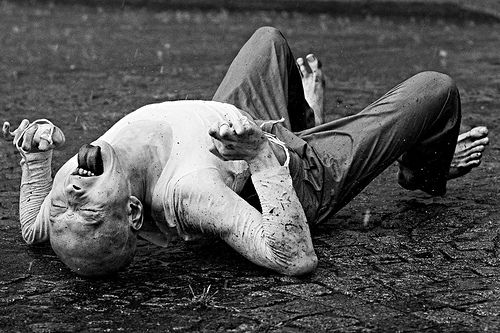
‘Butoh is an avant garde performance art, that has its origins in Japan in the 1960’s. After the second world war, Japan was a country in transition. It was a country still holding onto its old world traditional values while being forced into western democratic values by America’s conquest. During this time there was much student unrest and protest. Theatre groups were performing socially challenging pieces, and there were daily demonstrations in the streets. Butoh was born out of this chaos. Its founders were a young rebellious modern dancer named Tatsumi Hijikata (1928 – 1986), and his partner Kazuo Ohno (b. 1906 – 1010).
‘Hijikata was dissatisfied with the Japanese modern dance scene, feeling that it was merely a copy of the work being done in the West. He wanted to find a form of expression that was purely Japanese, and one that allowed the body to “speak” for itself, thru unconscious improvised movement. His first experiments were called Ankoku Butoh, or the Dance of Darkness. This darkness referred to the area of what was unknown to man, either within himself or in his surroundings. His butoh sought to tap the long dormant genetic forces that lay hidden in the shrinking consciousness of modern man.
‘His first public performances were wild, primal and sexually explicit. They quite naturally shocked the conservative Japanese dance community, and he was banned from appearing at future organized events. This was the spark that gave birth to butoh. Many of Japan’s dancers, poets, visual artists and theatre performers rallied around this exciting and dangerous new art form. Underground performances became increasingly popular, and soon there were numerous groups being formed in the Tokyo area. Musicians, photographers and writers including Japan’s leading novelist, Yukio Mishima joined Hijikata to collaborate on spectacular underground performances.
‘Butoh loosely translated means stomp dance, or earth dance. Hijikata believed that by distorting the body, and by moving slowly on bent legs he could get away from the traditional idea of the beautiful body, and return to a more organic natural beauty. The beauty of an old woman bent against a sharp wind, as she struggles home with a basket of rice on her back. Or the beauty of a lone child splashing about in a mud puddle – this was the natural movement Hijikata wanted to explore. Hijikata grew up in the harsh climate of Northern Japan in an area known as Tohoku. The grown-ups he watched worked long hours in the rice fields, and as a result, their bodies were often bent and twisted from the ravages of the physical labor. These were the bodies that resonated with Hijikata. Not the “perfect” upright bodies of western dance, or the consciously controlled movements of Noh and Kabuki. He sought a truthful, ritualistic and primal earthdance. One that allowed the performer to make discoveries as she/he created/was created by the dance.
‘It is easy to see how this dance, done in a trance-like state, on bent legs with rolled up eyes was disconcerting to the conservative Japanese modern dance community. But the work was soon to sweep the imagination of many younger artists, and by the 1970’s butoh began to gain world-wide attention, as groups such as Sankai juku and Dairakudakan were invited to perform internationally. Today there are a number of groups and solo artists performing in North America, with artists in Seattle, San Francisco and Los Angeles, New York, Vancouver and Toronto.
‘Butoh has tremendous value as a training method for artists of other disciplines as well. In a year-long experiment at the American Academy of Dramatic Arts in Hollywood, I worked with 2nd year acting students using butoh training methods to help unveil their natural expressiveness. We stripped away the socially acceptable movements and gestures, and encouraged the students to find and embrace hidden movements that lie buried beneath years of conditioned behavior. We bent the legs to view the world from a lower level, as might be considered by plants, animals and children. We purposely distorted the face, to keep out the natural desire to make the right expressions, or to give a calculated appearance. When the body is freed of its social constraints …… amazing things begin to happen. Hijikata often trained his dancers thru the use of images. He would use give the students surreal images and have them react to them, thus stimulating the body and the subconscious to respond. Examples would be: Butterflies are landing on your right arm, your left arm is covered with cockroaches. Or you are walking in mud and your eyes are on the back of your head. We used music or more specifically sound design creations by artists like Robert Rich, Tuu and Lustmord, to provide an other-worldly vista of auditory inspiration. The results we sudden and dramatic. Almost every student found within themselves a way of moving truthfully, and created many dramatic, original and emotionally charged improvisations. Hidden elements of ones personality also tended to surface during these experiments. These awakenings to the true nature of self proved extremely beneficial to their development as consciously aware human beings, and to the craft of acting as well.
‘Another aspect of butoh, that I find especially appealing is that every “body” is a perfect body. Meaning we are not so concerned as to whether or not the student has a perfectly fit and lithe body of a trained dancer, but rather that s/he finds organic expression through the body they have now. Most ballet and jazz dancers are sadly sent to pasture in their mid-thirties, and are soon passed over for younger more physically capable models. With butoh the mature body brings as much or more to the performance as does the youthful body. A prime example is the afore-mentioned Kazuo Ohno, who is now 96 and still performing with a vibrant inner intensity. His withered, aged body is his canvas and he paints with great beauty upon it. Least it sound like butoh is less an art form, than a therapeutic exercise, one must consider that butoh does have its techniques; strength, flexibility and balance are vital components. We learn to become one with the “other”. Butoh is a hybrid form of art, incorporating elements of theatre, dance, mime, Noh, Kabuki and at times the Chinese arts of Chi kung and Tai chi. It is up to the individual artist to find their own dance. But it should be a “dance” of discovery, rather than a calculated series of movements meant to manipulate the audience into a desired response.
‘Hijikata’s first dances were often grotesque, twisted, dark and perverse. Ohno’s butoh is more ethereal and floating, ever reaching to the light. Sankai juku are highly refined and tightly choreographed with their polished, other worldly movements of cat-like aliens. Or the masters of pure spectacle … Dairakudakan with their sensual, imagistic and highly theatrical happenings. Butoh is ever-changing, and is here to stay. Because it gives us a halted, reverberating picture of our muted struggle to be human in this technological age of the disenfranchised body.
‘Butoh was formed by an amalgamation of influences. The German expressionistic dances of Mary Wigman and Harald Krautzberg gave butoh its creative freedom. Western writers such as Genet, Artaud and de Sade were read by butoh groups. Surrealism and Dada were another source of inspiration. Ohno was influenced by Marcel Marceau and especially by the passion of a Flamenco dancer named La Argentina, who he first saw in 1923 when he was a young boy. Some modern butoh performers have come from the dance world, others such as myself from theatre, or more specifically from mime. One the greatest butoh performers, and protege of Hijikata was Yoko Ashikawa, who had no previous theatrical or dance experience. Today a great variety of styles and aesthetics can be found in butoh. It has ceased being an exclusively Japanese art-form and is developing all over the world.’ — Don McLeod, ‘An Art Form in Transition’
_____________
Dance of Darkness
‘Director Edin Velez’s documentary study of Butoh includes archival footage of early Butoh pioneer Tatsumi Hijikata, who is credited as the form’s originator. Kazuo Ohno, another early Butoh performer, is shown performing his famous “Admiring La Argentina,” and other works. Other companies whose works are shown include Akaji Mori’s Dai Rakuda Kan, Isamu Ohsuga’s Byakko Sha, and Yoko Ashikawa’s Hakutoboh. These examples reveal the depth and diversity of Butoh as it has evolved. Many of these dancers worked directly with Hijikata at some point and all speak to his influence, as they are interviewed about the art form. One performer, Akiko Motofuji, explains, “Ballet and modern dance spring from the earth … Hijikata created a dance, which crawls on the earth.”’ — Open Vault
____
Books
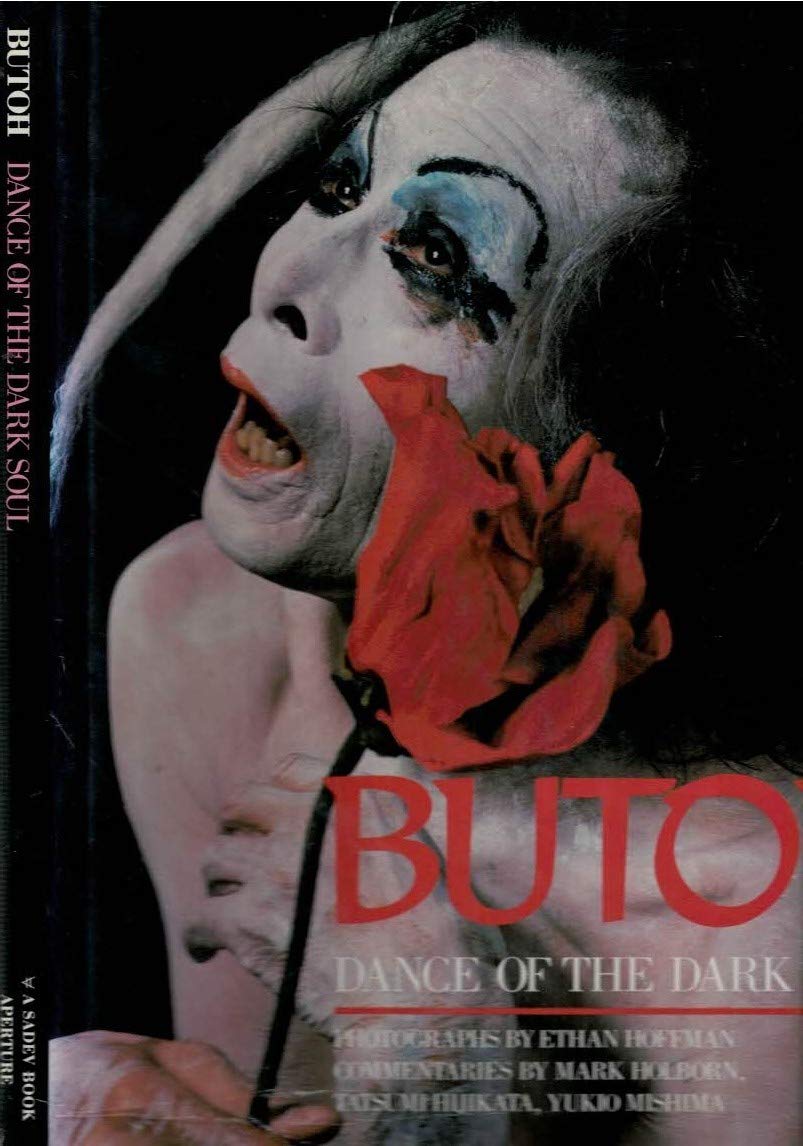
‘In Butoh: Dance of the Dark Soul, Ethan Hoffman creates virtually a new genre of photographic theatre and gives us an invaluable contribution to the literature of contemporary dance and theatre. The performers featured include Kazuo Ohno, Yoko Ashikawa, Akaji Maro and the group Dai Rakuda Kan, Min Tanaka, and many others.’ — ama
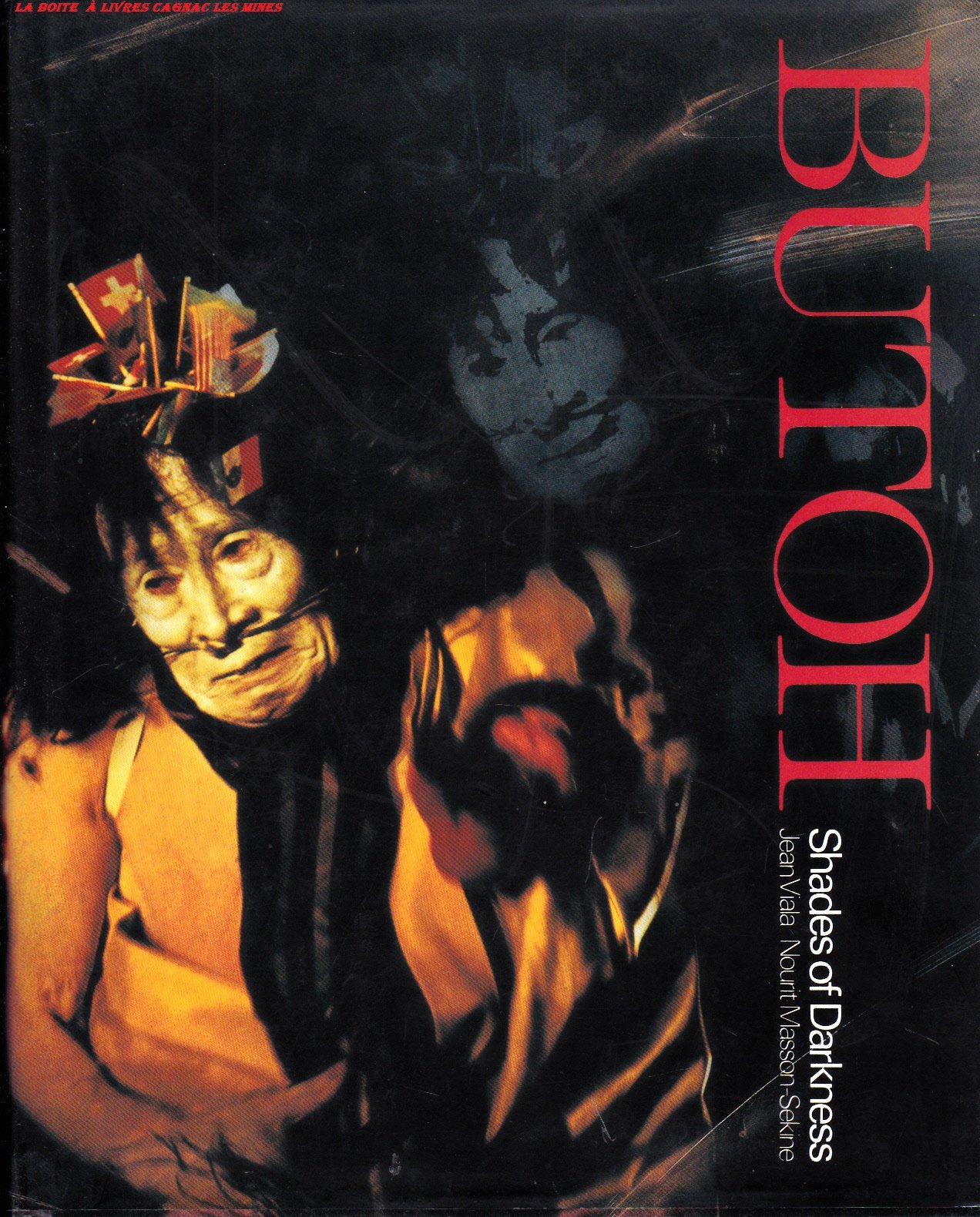
‘In Butoh: Shades of Darkness, Jean Viala gives helpful timelines for a lot of the groups, and groups them based on approach. He covers all the groups in Hoffman’s group, plus Akira Kasai, Teru Goi, Dance Love Machine, etc, with a quick overview of a number of younger groups. Some of these use very different imagery from the “classic” butoh. Most of the representative figures also wrote one-page notes on their approach.’ — Bill Hsu
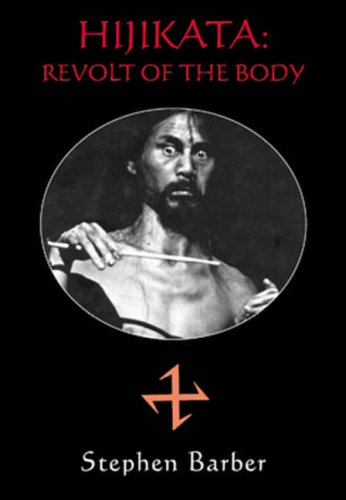
‘Steven Barber’s Hijikata: Revolt of the Body is a good book on Hijikata. Lots of nutty details of Hijikata’s life, and good photos from performances.’ — Bill Hsu

‘Kazuo Ohno and Tatsumi Hijikata in the 1960s is the catalogue for the 2nd Kazuo Ohno Festival including the rare images of Kazuo Ohno, Yoshito Ohno and Tatsumi Hijikata in 1960s taken by American famous photographer William Klein and treasured photos from Tatumi Hijikata Archive at the Art Center of Keio University. It includes the interview with Yoshito Ohno as well.’ — Kazuo Ohno Dance Studio
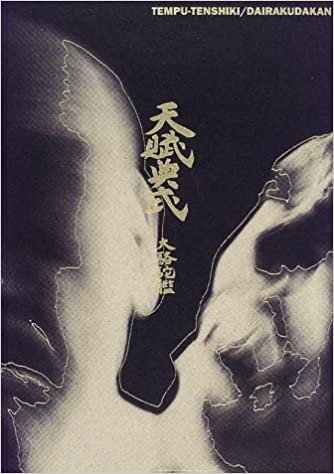
___
Stills

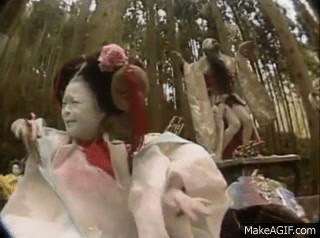
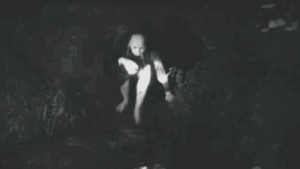

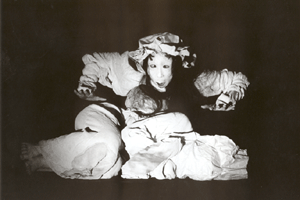

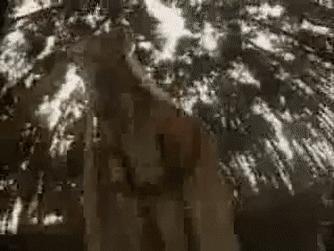
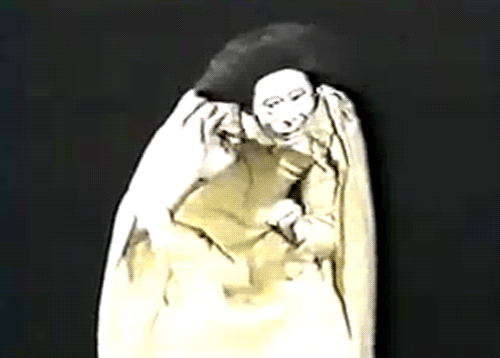
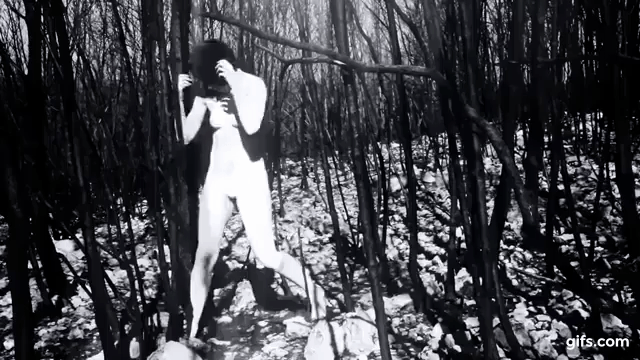
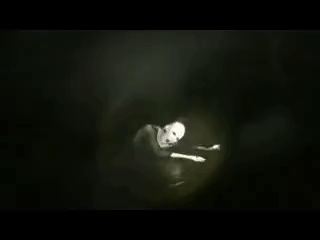
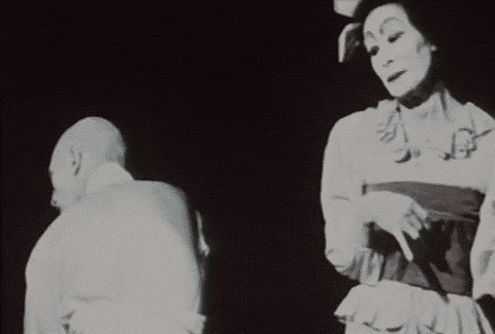
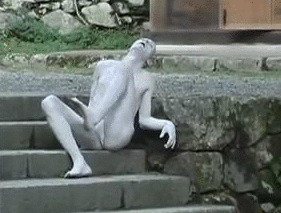
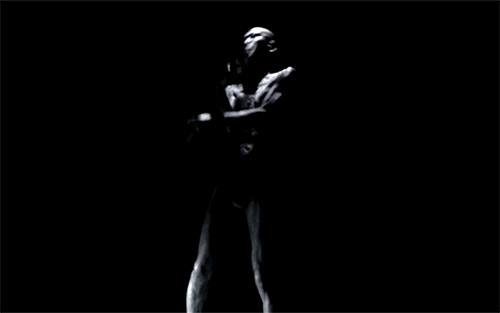
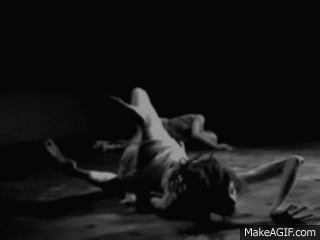

_________
Select artists
Kazuo Ohno
Mother
The Written Face
Tatsumi Hijikata
Hosotan (Part 1)
A Girl
Dairakudakan
Excerpt
Excerpt
Sankai Juku
from ‘Tobari’
from ‘Kagemi’
Yoko Ashikawa
芦川羊子 白桃房
Forma Humana
Byakko Sha
from ‘Tao Matsu’ (Excerpt)
from ‘Tao Matsu’ (Excerpt)
Min Tanaka
“Min Tanaka & Maijuku” documentary Part 1/5
from ‘Rite of Spring’
Akira Kasai
KYOTO EXPERIMENT 2011
Masaki Iwana
Excerpt from ‘Magnetic Field’
Excerpt from ‘Magnetic Field’
Eiko & Koma
Excerpt from ‘Naked’
Eiko & Koma: My Parents 1/2
_____
Further
Kazuo Ohno
Tatsumi Hijikata
Dairakudakan
Sankai Juku
Yoko Ashikawa
Byakko-Sha
Min Tanaka
Akaji Maro
Akira Kasai
Masaki Iwana
Eiko & Koma
*
p.s. Hey. ** David Ehrenstein, Hi. I think my interest in MJ/MC speculation and presuming is exhausted. ** Ian, Hi, Ian. Awesome, I’m happy you liked ‘Castle Faggot’. Derek is a very special writer. His other novels are wonderful too. And thank you about the resourcefulness of my blog. I do hope it spreads stuff fruitfully. I’m all in on that theatrical production. I think there was a theater adaptation of one of his books, I can’t remember which. Have a lovely, lovely day, man. ** Damien Ark, Ha ha, the ultimate compliment! Thanks, D. ** Golnoosh, Hi, G! Yeah, Ryu Murakami … I’m not amazingly into his stuff. I interviewed him years ago — I think it’s in ‘Smothered in Hugs’ — and found him … lacking. Yes, I think Anne Carson, as serious as she is, must have a wicked sense of humor, because her decision to do that for the marathon was pretty weird in the best way. Hopefully the publisher picked the right voice for your audiobook.I don’t know about you, but I’m pretty particular about how my stuff should be read for maximum effect, and I suspect the kind of voicing I like is not the kind of voicing a publisher would choose. Intertextuality would be a nice outcome, wouldn’t it? You doing good? Is the harder lockdown causing you any notable problems? ** Jack Skelley, Howdy, Jack. I think you’re right, yes. Maybe it’s because the expectation around what works are supposed to do makes the canceling of words’ conventional skills via repetition feel oppressive? Musical notes are so wonderfully malleable. I like Caroline Bergvall’s work, yes. Huh, I should do a post about her. There’s the poet Jaap Blonk who works in that realm. Hit or miss, but sometimes kind of exciting. Top of the morning to you, bud. ** cal, Ah, you’re your job’s traffic cop or lighthouse keeper or something. Noble work, in my opinion. Favourite animated movies … huh. Totally off the top of my head, maybe ‘Tamala 2010: Punk Cat in Space’, ‘Pinocchio’, ‘A Scanner Darkly’, ‘Neon Genesis Evangelion’, Stan Brakhage’s ‘Star Garden’, ‘Triplets of Belleville’, ‘Wall-E’, Hollis Frampton’s ‘(nostalgia)’, ‘Coraline’, … What are yours? ** David S. Estornell, Hey, D. I saw that yesterday. I thought parts of it were really funny and other parts seemed to be trying too hard. Fun, though. You like it? ** Bill, Hi. Yeah, I had a moment or rather afternoon when I got obsessively interested in psychoacoustics and took the blog along with me. One could disappear in there. Not me, I don’t think. ** Dominik, Hi, Dominick! I wish I’d thought to snap an iPhone pic of the poet because I’m sure if I had his face nearby I would love his poem anyway. Drat. Wow, that would be some tattoo. I just found a slave the other day who had some kind of text tattooed over every inch of body below the jawline. I think it might have been the Bible though, yuck. Love like this other skinny, teenaged slave I found the other day whose fetish is having his stomach inflated into a huge balloon and then going out in public and scaring people, Dennis. ** _Black_Acrylic, Yes, take every precaution or more during your trip to the Therapy Centre. That new strain sounds pretty spooky. Everything go okay? ** Jeremy McFarland, Hi, J! Cool about the post’s daylong effect! Aw, you guys are not only lovebirds but experimental sound artists to boot. You’re hitting the heights. Hm, I don’t think I really thought about being young when I was young, other than being acutely aware of how young people like myself were treated with insufficient respect. That feeling was acute. Getting older is really kind of interesting. There’s this kind of settling thing that happens that you have to recognise and fight with. I think that’s the main thing: keeping nostalgia as a sworn enemy. Otherwise, it’s kind of fine other than the growing realisation that life is way, way too short, of course. Happy Wednesday! ** Brian O’Connell, Hi Brian. Thanks about the post, man. Yeah, you keep nailing the reasons why ‘TMS’ is my favorite of my novels. That’s wild. It’s kind of the novel I always wanted to write from when I first wanted to be a novelist, but it took me a long time to get skilled enough and think things through sufficiently to be able to do it. Anyway, yeah, thank you. I think my fiends start drifting back into the city today, so things should start to happen in a less lonely way. You’re off to the city today? What did you do? What did you plan to do, and did you do what you planned? And all that good stuff? ** Right. Are you people out there familiar with the great Japanese art of Butoh? If not, here’s an intro for you. If so, here’s a dip into what you already know. I hope it suits. See you tomorrow.




 Now available in North America
Now available in North America 
Coucou, in fact I adore buto. Thanks for this great day in your blog. have a lovely day dear Dennis
OhNo OH YES!!!!
Michael jackson is indeed exhaustung. it was unspeakably grotesque at the time. but now it’s part of a past i venture few want to revisit. Jacko offered a ‘solution” to American racism in the form of a castratio whose pedophilia was put in plain sight and denied even as it transpired. His efforts at turning himself white disgusted me just as much, his test tube “children” are now adults i trust they can live off his funds even as the image f what was onc a talented little back boy collapses into the Memory hole.
Dennis! I read your interview with Ryu Murakami this morning (and yes, it’s on p. 140 of Smothered in Hugs) oh my god! It cracked me up so hard I had to read it twice. I also read the cheekiest bits aloud to J, and we were both screaming with laughter… But I also realised why his writing isn’t appealing to me much. You said it really well in your essay/ interview ‘[…] clever prose that renders the characters irresistible but rarely transgresses their psychology.’ It also makes sense that his fave director is Tarantino; I find both their highly stylised work generically comedic and ultimately shallow. Anyway, thanks for solving this mystery. And thank you so much for this phenomenal post! I haven’t had the time to go through it properly but saving this as research for the novel I’m writing; in fact, Mother by Kazuo Ohno has already made an appearance in my novel. Aw, I don’t really mind the strict lockdown, in fact, I think it’s a good idea and they should’ve done it a long time ago as covid is pretty bad here… J & I have been super cautious anyway… I also know how to entertain myself, although even I am getting a bit bored… but boredom isn’t really a notable problem, is it? I’ve had worse lol. I actually feel calmer and happier these days as my elderly father just moved to Canada to live with my sister and her kids – two days after you and I zoomed – and I didn’t really realise then but in retrospect I can see that the thought of him being mostly on his own in IR during the pandemic was the main source of my severe anxiety… in fact, I was considering returning to IR for a while but that wasn’t an easy option either as you can imagine. I haven’t seen my dad IRL in two years… but hopefully we shall reunite either in Canada or the UK in summer… Do you have any plans for your birthday? Xxx
Gosh, this hits right in the sweet spot of my interests! I was aware of butoh but had never really looked into it… I was living in Japan up until last September, so it’s making me regret I didn’t try harder to see a performance or something. Oh well!
Great to see the update, Dennis! I have to go watch some of the videos again. Yikes, I must have been stoned when I wrote that Jean Viala summary.
I might have mentioned this doc:
https://letterboxd.com/film/queer-japan/
Matsuda from Dairakudakan is in it. There’s nice footage of him dancing, solo and with the group. Also some good footage of Saeborg, whom I discovered through your blog.
Bill
Hi!!
Holy shit, okay, I don’t know which slave is freakier – the one with the Bible tattooed on him or the one with the stomach fetish. Maybe the latter. The fact that he deliberately scares people with it is really creepy. Are they gonna be featured in this month’s slave post?
Love this clean and sober: https://www.youtube.com/watch?v=UMtH58M3HXA
I was at the MS Therapy Centre today for Oxygen treatment and it was fine. Sat in the tank, breathing through the special mask and reading Morvern Callar for an hour. One other guy in there. Everyone in the place observing strict protocol ie all masked up correctly so no jeopardy involved there. Gotta say though, the traffic on our ride home was extremely heavy, you wouldn’t think there was a lockdown in operation around here at all. Seems it’s every man for himself right now.
<A HREF="http://fablog.ehrensteinland.com/2021/01/06/theres-a-racist-goin-Latest FaBlog: There's a Racist Goin Onon/”>
After 3 days without Internet access, I got my laptop back today. I will be spending the next week adjusting to the new keyboard, and resurrecting my lost applications and bookmarks, but it’s basically all good now. I have Kindle, Spotify, Microsoft Word and LMMS (my digital audio workstation) up and running again.
When I got home, I phoned my dad to let him know that I had the computer back and could receive E-mail again. He asked “Did you hear what happened in the Capitol?” I had been away from all media for several hours, but I could immediately guess the general gist. I know you like to keep this space free from discussions of Trumpist politics, but fucking hell! It feels like May ’68 is happening in America, except from the opposite direction.
I haven’t checked out Butoh in quite awhile so this was a very fun refresher 🙂 I didn’t know much about how Butoh is taught or the philosophy behind it, but it was very interesting to read a bit about.
It feels obligatory to mention the protesters who stormed the capitol the afternoon(/ yesterday afternoon). But I don’t feel like there’s anything thoughtful left to say about it, just plenty to feel bad about, I guess. It’s not surprising, just very disappointing and nerve-wracking. It’s frustrating to see the news act like this came out of no where, but maybe they’re just surprised it actually happened. Idk, ugh. I work adjacent to (in?) politics so it’s nearly impossible to get away from bad news and I feel bad when I want away from it. UGH! Hope you get some kind of relief from it in Paris!
Anyway, hope you are doing well and have some nice things going on today!
Hey, Dennis,
This stuff is just amazing. Japan has a real knack for unsettling performance art. Ever seen “Kuroneko”? An extremely bleak and pessimistic ghost horror movie that has this wonderfully stylized, uncanny blocking and staging inspired by Noh theater. It’s really something. Just a film that came to mind while leafing through this compendium.
Re: my city visit: we went in first and foremost to take a look at Penn Station’s new train hall, which was actually quite impressive, and empty enough that we could really appreciate the scale and structure of it. Then we headed over to the Morgan Library, which had a Hockney and a Betye Saar exhibit, both very interesting in vastly different ways. After that, to the Strand, where I meant to pick up Curzio Malaparte’s “Kaputt”, but as I forgot to bring money, it’ll have to wait for now. And back to Penn Station, closing a pretty good day, when bam—I get a text from a friend filling me in on the fascist nightmare unfolding in the nation’s capital. I mean, holy shit. I’ve been in shock since. It’s not surprising that something like this happened—anyone who’s been paying any attention at all could predict that there was going to be some sort of violent outburst—but it’s still so fucking surreal to actually watch it unfold. Things seem to have basically died down now, but I’m shaken, and angry, and have a nagging feeling that we’re going to see worse yet by January 20th. Hope I’m wrong, though.
Anyway. Yay about your “fiends” drifting back in. Any plans to see them sometime soon? And how did your own Wednesday go? Can’t imagine it was as freaky as ours in the States. Going to head upstairs and unwind now with some Thomas Mann, whose short fiction I’ve recently started reading; it’s great, and will hopefully provide some relief from today’s horrors. Talk to you tomorrow.
(P.S.: jumping in on your animated film discourse with cal, mine are “It’s Such a Beautiful Day”, “Princess Mononoke”, “The End of Evangelion”, “Perfect Blue”, and if I’m feeling exceptionally sentimental “Your Name”. Also, if they count, Gerald Scarfe’s Pink Floyd animations, which I saw way too young and permanently, horrifyingly imprinted my brain. Honorable mentions to “When the Wind Blows” and “Grave of the Fireflies”, also horrifying. There are others but those are the ones that come to mind initially.)
Dennis,
Something like a traffic cop for sure. Lighthouse keeper would be an interesting job. Or maybe just a cool place to hang out in. I needed today’s post cant wait to comb thru it. Butoh is so fascinating. I found out about it thru Antony and the Johnsons weirdly enough. Ohno was an inspiration. Definitely checking out Tamala. Those are some solid choices. Havent seen that Brakhage which I’m going to correct immediately! My favorite animated movies: The Plague Dogs, Son of White Mare, Wizards, The Hobbit, Eva too, Titan AE, Rock & Rule, Waterzhip Down. Feels like I could go on forever. Animation is so magical.